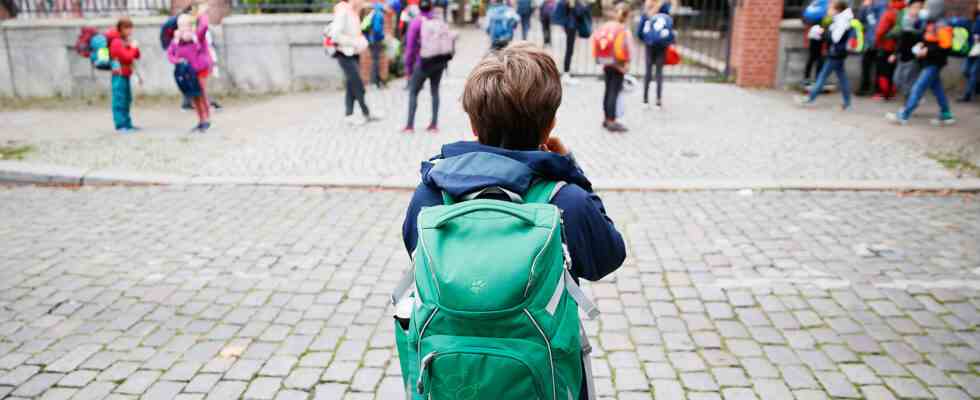Status: 09/20/2022 3:17 p.m
The third fall of the pandemic, war in Europe and the climate crisis: for children and young people, many things are no longer what they used to be. Children from poorer families are particularly hard hit.
“It doesn’t matter whether it’s air filters, free FFP2 masks or corona tests: the school has always been a place where we said: ‘Come on, we can put these things back.'” Colin Haubrich represents 400,000 schoolchildren from all over the Rhineland -Palatinate – from secondary school to vocational school to grammar school. “We were never priority one in everything and we still aren’t,” says the student representative from Betzdorf. Haubrich is part of the generation that bears the warning stamp “Generation Corona”, from his point of view.
The uncertainty is great
“The threat of war in Europe is another heavy emotional burden on their mood,” says social researcher Klaus Hurrelmann, author of the “Youth in Germany” study. Accordingly, this war is currently the greatest concern for 68 percent of young people. “Many are very worried about their professional, financial and economic future,” says Hurrelmann.
It’s the same for student representative Haubrich: In a few months he will be taking the Abitur exams himself. “When I consider whether I might want to study, the question is to what extent it will still be possible? Or whether you will have to ask yourself completely different questions in a year’s time.” The feeling of security known before Corona is giving way to a kind of loss of control.
Climate change and inflation ranked second among young people’s concerns in the study. “The problem is that you race from one crisis to the next without really being able to breathe easy,” says Haubrich. About 1,000 young people between the ages of 14 and 29 are interviewed every six months for the study. The consequences of this uncertainty are also documented in the study: for many, the psychological burden has increased, almost half feel under stress, and more than one in three speaks of listlessness.
irritability and listlessness
An AOK study surveyed 3,000 mothers of children between the ages of three and 12 in the spring: 16 percent see losses in the physical and 35 percent in the mental health of their children. They primarily describe symptoms such as irritability and aggressiveness, but also lack of drive and anxiety.
This mainly affects single parents and mothers with a simple education and low income. “A common thread running through almost all of the results of our study is that children from socially disadvantaged families were significantly more affected by the pandemic,” says study leader Klaus Zok.
“Children with problems now have bigger ones”
This is also noticeable in the Protestant-Catholic telephone counseling service in the Palatinate. According to their own statements, 40 percent of counseling chats with young people between the ages of 15 and 19 are now about suicide. 70 percent of the young people who seek advice there are girls. “When a large ship passes through on the Rhine, the suction and the waves only occur afterwards,” says Peter Annweiler from the management team in the Rhine SWR-Interview the comparison.
Günther Stratmann is chief physician at the Clinic for Child and Adolescent Psychiatry, Psychosomatic Medicine and Psychotherapy in Klingenmünster. He says: “We see more critical escalations and sicker patients in the pandemic.” In 2018, 50 percent of the cases treated were still emergency rooms – for example because of harm to oneself or others – this year, however, 70 percent. “Not everyone suffered. The children and young people with better conditions didn’t have any problems. Those with problems now have bigger ones.” In his view, however, too little is currently being done to remedy this deficiency.
Offers for open youth work are booming
Karl Steffen Winkler is a “street jumper”. He has been visiting children in disadvantaged residential areas in Mainz regularly for many years with a colorful mobile home. The demand for open child and youth work was higher than ever after the Corona break. “That is certainly also due to the fact that we are a kind of balance for everyday life.” The association “Poverty and Health” is behind the “Street Jumpers”. Around the mobile home there is a healthy snack, drinks and sports and play facilities – for children and parents. “For the children, it’s all about playing; when talking to their parents, it’s about having less money in their wallets,” reports Winkler.
“We never really followed up the whole time,” student spokesman Haubrich looks back. “What can we do now to prevent mental health from improving, for example? That the pressure to perform and grades in schools is no longer so high?” Questions to which, from his point of view, there are currently no answers. And questions that become more and more urgent in the crises.

